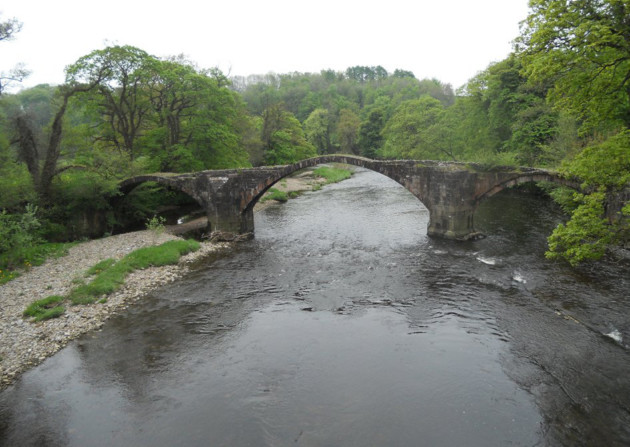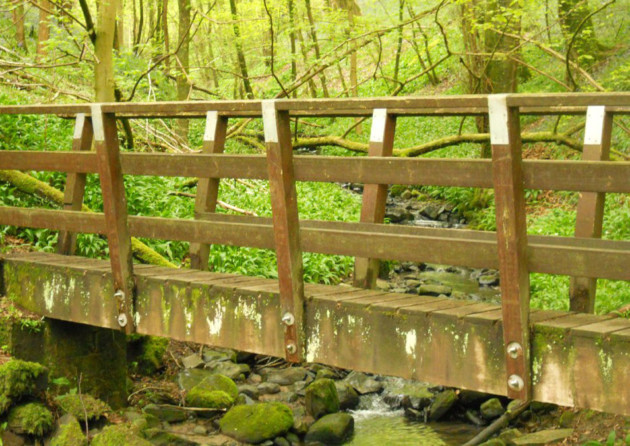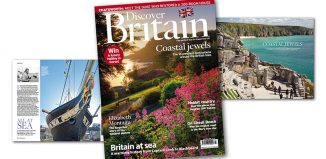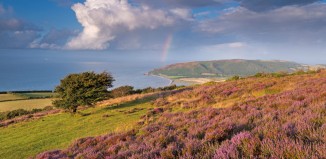In the footsteps of Tolkien
Once seen, the untamed beauty of the Ribble Valley is never forgotten. Its peaks and valleys, pretty market towns and meandering rivers are clothed in shades of green, the countryside stretching away as far as the eye can see. For author JRR Tolkien who was a frequent visitor, the landscape was inspiration for ‘Middle Earth’ in his Lord of the Rings creation. During the Second World War Tolkien’s son John was evacuated from his studies in Rome to St Mary’s Hall (now the preparatory school for Stonyhurst College) near Clitheroe. As a result the family were regular visitors, staying at a nearby guesthouse. Here and in the college itself John senior proceeded to write his fantasy trilogy, with many aspects of the Valley immortalised in print.

1. Follow the 5½-mile trail from the village of Hurst Green through the valley passing many sites unspoilt since the time of Tolkien. From the war memorial, take the street named Warren Fold through the edge of the village and across the fields, taking in the domes of Stonyhurst College to your left. The prestigious Catholic boarding school attracts an international student community, from three to 18 years old.
2. Keeping the college’ perimeter wall on your left, pass through the gateway and turn sharp right, crossing the field. Head towards the red brick cricket pavilion, passing through a kissing gate in to another field. Follow the field boundary and exit at a second kissing gate, following the path downhill and over the stream. Here, climb up the hill, keeping Fox Fall Wood on the left. As the gradient levels, bear right across the paddock to exit at the top corner with the college Observatory just ahead. Built in 1868, it houses a large telescope that is still used by Stonyhurst students. Follow the tarmac track towards Hall Barn Farm.
3. Walk through the farmyard and notice the contrast of the farm buildings against the sudden magnificent view of the 16th-century Stonyhurst College, to your left. On your right are views of the distinctive Pendle Hill, the highest hill in Lancashire at 1,860ft, famously associated with the Pendle witches of the Jacobean era. The outline of the 12th-century Clitheroe Castle (open to the public) may also be seen on a clear day.
4. At the end of the track, cross the road at Woodfields – where Tolkien’s other son Michael once resided) into a lane between the houses. This quickly turns into a rough track; bear right at the fork and over a stile keeping the field boundary on the left. Near the end, cross the stile into the wood and descend the forest path of Over Hacking Wood.
5. At the valley floor, cross the pretty wooden bridge over the stream and take the path which forks to the right towards the river Hodder. Turn right just before reaching the water, crossing over a bridge and climbing uphill. The large 18th-century property of Hodder Place is on the right, once home to a cotton mill-owner. It later served as a school and is now divided into residential flats. As you descend with the river on your left, keep an eye out for herons. Emerge from the woodland at the bottom of the hill, and follow the curve of the river until reaching the main road.
6. Cross the road and pause to admire Cromwell’s Bridge, a three-arch ruin a little downstream. Also known as Devil’s Bridge, this was built in 1562 to replace a wooden structure. Oliver Cromwell is thought to have crossed it during his march from Skipton to intercept the Royalists at the Battle of Preston in 1648. Follow the main road uphill, keeping to the pavement. At the junction at the top, turn into the field on your left. Bear right and up hill, crossing the stile into the next field. At the brow of the hill, pass through the kissing gate and head towards the hedge to the left of the farm buildings. Exit through another kissing gate and turn left along the tarmac track into Winckley Hall Farm. Walk through the yard to rejoin the river, on your left.
7. Follow the riverbank here and where the Hodder joins the Ribble take the path to the left, passing a bulbous-trunked tree worthy of Middle Earth, to reach a stile, situated near a bench overlooking the water. Follow the river, looking out for the stately 17th-century Hacking Hall on the opposite bank. Just upstream a ferry service operated until the 1950s, thought to have inspired the Buckleberry Ferry in Tolkien’s novel.
8. Follow the bank of the Ribble. Anglers can often be seen waist deep in the river, patiently waiting for a catch and their huts dot this part of the bank. The route will eventually lead to a small stone building where you will climb away from the river, over a stile towards Jumbles Farm. Follow the track to pick up the line of the river once more, walking through the field. The hillside above you bears an interesting stone cross which dates to the early Christian period. It was moved here in 1833 by the Rector of Stonyhurst.
9. Cross a stile and continue alongside the river. You will see an aqueduct ahead of you. On reaching it, cross the stile to its right and bear right across the field, crossing a second stile to enter the woods. Follow the path over a wooden bridge, walking uphill following the fence on the left. Cross two further bridges and another stile, slowing ascending a low ridge as you leave the woodland and enter a field.
10. After about 200m, cross the stream on the right and turn left to continue uphill, following the line of the field boundary. At the top of the field, cross the stone stile in the left hand corner, passing through the car park of the Shireburn Arms Hotel. Cross the road to reach the start.
Where: The Tolkien Trail begins in the village of Hurst Green, five miles west of Clitheroe on the B6243. There is limited parking in the village. Alternatively, take a bus service from Clitheroe or Preston to Hurst Green.
Contact: For more information on possible activities in the area contact Clitheroe tourist information centre. www.ribblevalley.gov.uk






